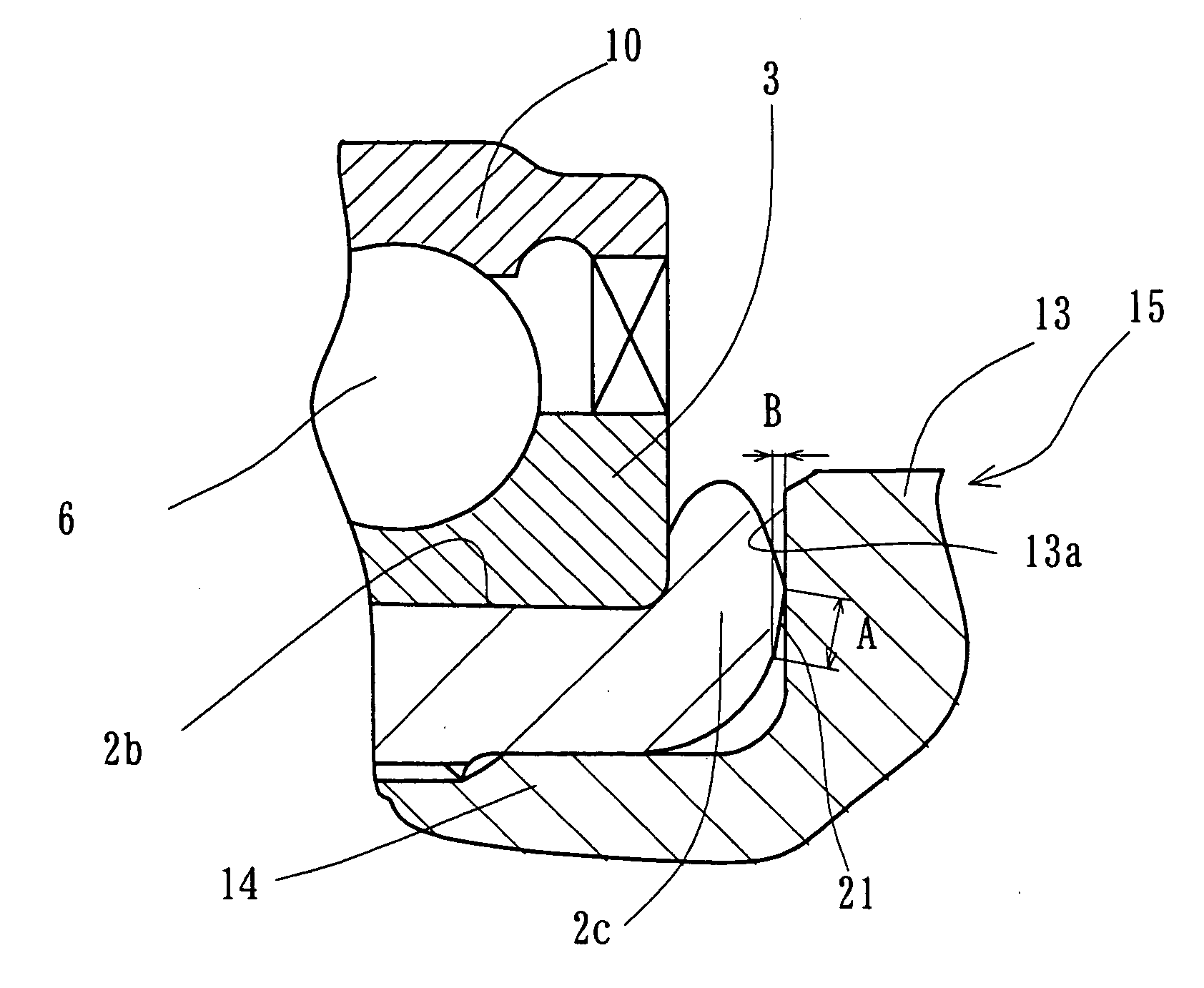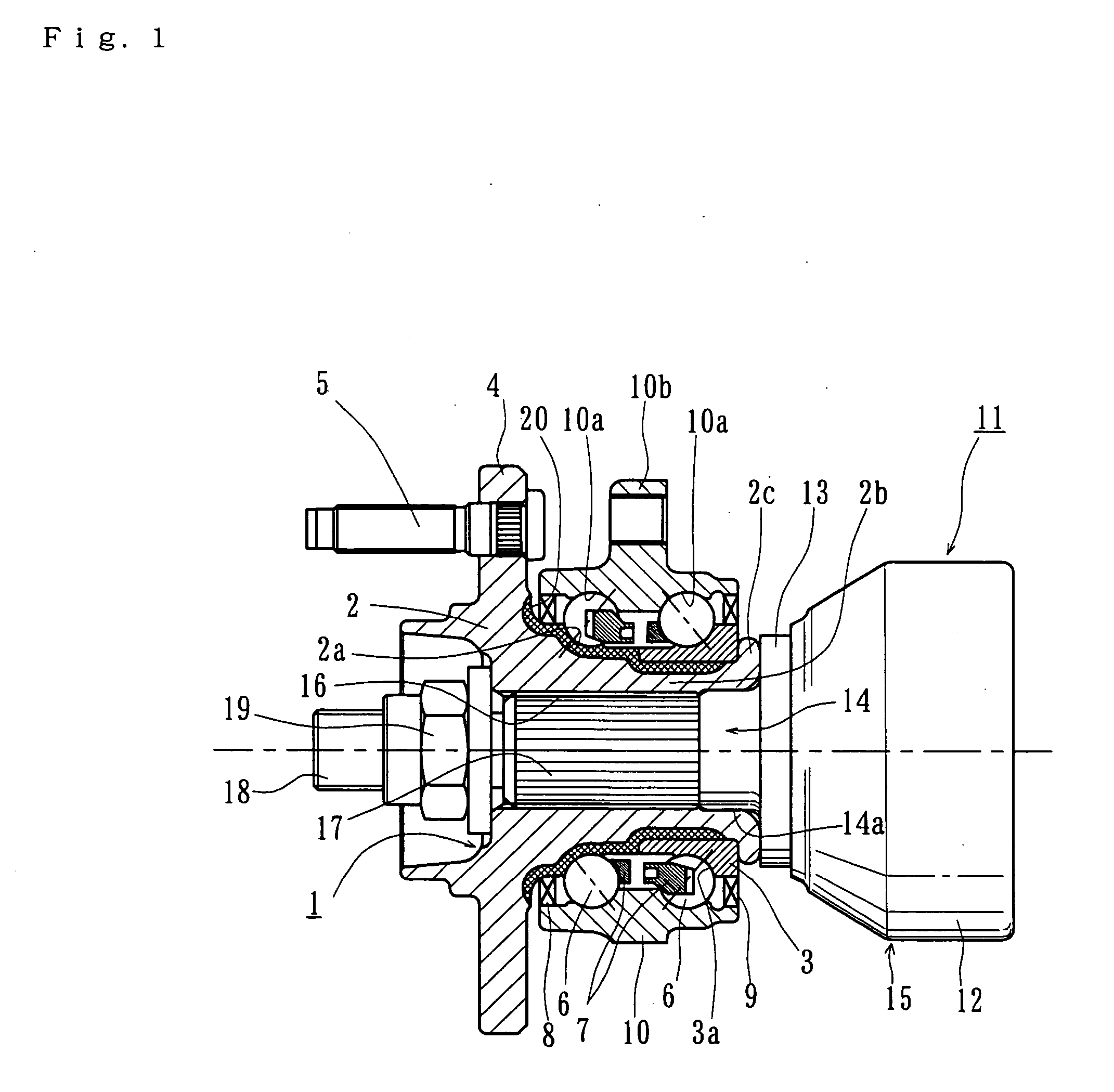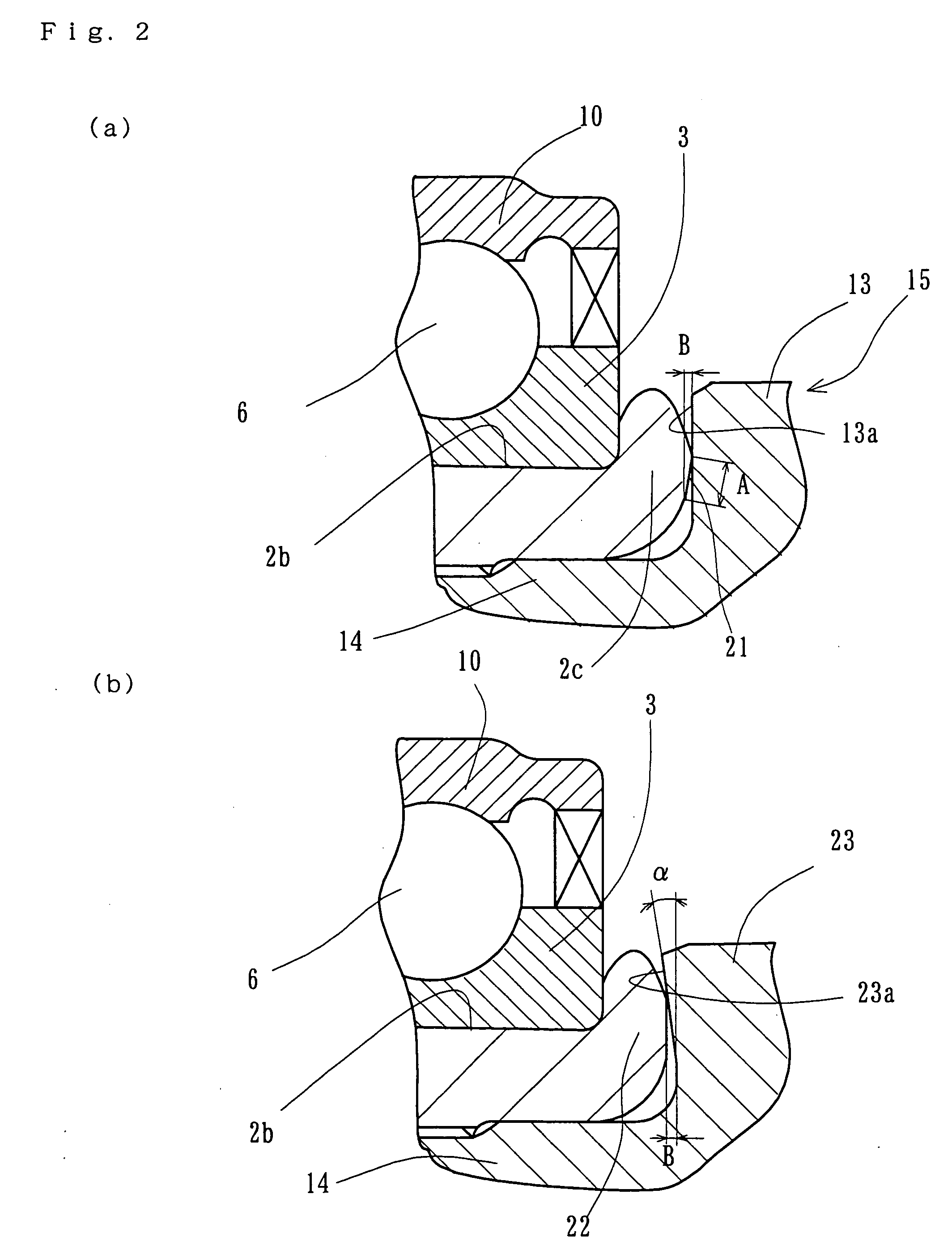Bearing apparatus for a driving wheel of vehicle
- Summary
- Abstract
- Description
- Claims
- Application Information
AI Technical Summary
Benefits of technology
Problems solved by technology
Method used
Image
Examples
Embodiment Construction
[0028] The following description of the preferred embodiment(s) is merely exemplary in nature and is in no way intended to limit the invention, its application, or uses.
[0029]FIG. 1 illustrates a first embodiment of a bearing apparatus for a vehicle driving wheel of the present invention, FIG. 2 (a) is an enlarged view of a portion of FIG. 1, and FIG. 2 (b) is an enlarged view showing a modification of FIG. 2 (a). In the description below, the term “outboard side” (a left-hand side in drawings) of the apparatus denotes a side which is positioned outside of the vehicle body. The term “inboard side” (a right-hand side in drawings) of the apparatus denotes a side which is positioned inside of the body when the bearing apparatus is mounted on the vehicle body.
[0030] The vehicle driving wheel bearing apparatus includes an inner member 1, an outer member 10, and a double row rolling elements (balls) 6 rollably contained between the inner and outer members 1 and 10. The inner member 1 in...
PUM
 Login to View More
Login to View More Abstract
Description
Claims
Application Information
 Login to View More
Login to View More - Generate Ideas
- Intellectual Property
- Life Sciences
- Materials
- Tech Scout
- Unparalleled Data Quality
- Higher Quality Content
- 60% Fewer Hallucinations
Browse by: Latest US Patents, China's latest patents, Technical Efficacy Thesaurus, Application Domain, Technology Topic, Popular Technical Reports.
© 2025 PatSnap. All rights reserved.Legal|Privacy policy|Modern Slavery Act Transparency Statement|Sitemap|About US| Contact US: help@patsnap.com



